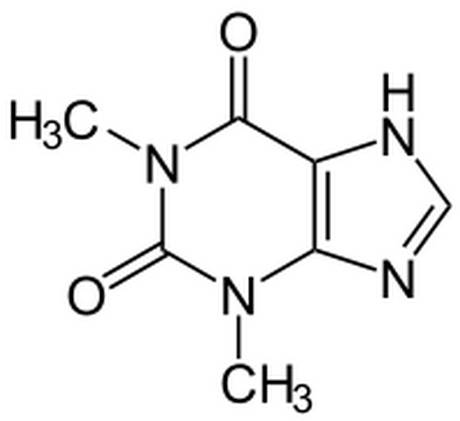Time for coffee and tea
Chemicals in black tea
Physiology
Recommended Pages
How Producion Changes the Chemical Constitutes of Black Tea
The production of black tea is very disruptive and includes the plucking of leaves, withering, rolling and a drying process. All of these processes lead to great changes in the structure of the cells of Camellia sinensis with approximately 75% of the catechins undergoing oxidation or polymerization changes. One of the main enzymes involved in the oxidation process of black tea production is tea leaf polyphenol oxidase.
What is in a Drink of Black Tea
Once leaves have been prepared as a drink the chemical properties of a cup of tea are very different to what is seen in the tea leaves themselves (after all the majority of the leaves are thrown away upon brewing tea). The largest constituents of black tea are Carbohydrates (15%), Thearubigins (~15%), amino acids (~14%), phenolic acids (~11%), catechins (~10%), mineral matter (10%), methylxanthines (9%), flavonols (~7%), theaflavins (~5%) and volatiles (less than 0.1%).
 The caffeine like molecule Theophyllin, a methylxanthine that is found in tea: Source.
The caffeine like molecule Theophyllin, a methylxanthine that is found in tea: Source.
Quinones in Black Tea
During the initial stages of the production of black tea quinones are produced. These quinones formed from the catechins interact with each other to form larger chemical structures known as theaflavin. Other benzotropolone compounds in tea include theaflavic acids and theaflagallins. Gallocatechin quinones can also produce bisflavanols.
Black tea flavonols and caffeine
Some of the other flavonols contained in black tea are rutin, myricetin, kaempferol and quercetin. In addition to flavonols another important group of black tea components are phenolic acids; these include many of the components that make up caffeine like compounds, including quinic, caffeic, thenine and methylxanthines. On average the concentration of caffeine found in black tea is about a third of that seen in coffee.
ReferencesLunder (1989) Tannings of green and black tea: nutritional value, physiological properties and determination. Farm Tijdschr Belg;66:34– 42.
Luczaj et al (2005). Antioxidant properties of black tea. Prev. Med. 40: 910 to 918
Harold et al. (1992) Green tea compositon, consuption and polyphenol chemistry. Prev Med. 21:334– 50